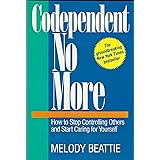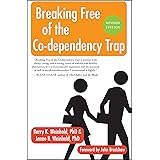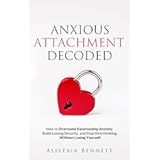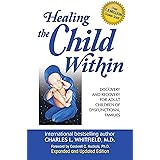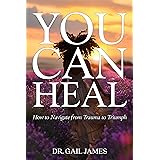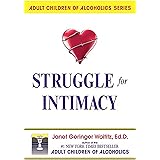Have you ever found yourself caught in a cycle of impulsive purchases, only to be left with regret, debt, and a lingering sense of emptiness? The accompanying video, featuring hypnotherapist Kate, sheds light on the often-misunderstood phenomenon of shopping addiction, revealing its deep-seated psychological roots and offering a path toward healing. It is a condition that extends far beyond mere retail therapy, often masquerading as a temporary salve for deeper emotional wounds.
Compulsive buying disorder, commonly referred to as shopping addiction, is more prevalent than one might assume, particularly within a culture increasingly driven by consumerism. Understanding this complex behavioral pattern necessitates a shift in perspective, moving away from judgment and towards empathy and informed intervention. The journey to liberation from its grasp typically begins with an acknowledgment of the underlying drivers rather than simply addressing the symptoms.
Understanding the Enigma of Shopping Addiction
1. The Essence of Compulsive Buying: At its core, shopping addiction functions as a sophisticated coping mechanism. It is often experienced as a means by which immediate pleasure is sought, while simultaneously providing an escape from discomforting realities. This dynamic aligns with the universal principle that the human mind is predisposed to gravitate towards pleasure and recoil from pain, a concept rigorously explored in various therapeutic modalities.
2. The Subconscious Narrative of “Not Enough”: A pervasive theme that frequently underpins compulsive shopping behaviors is an internalized belief of inadequacy. Individuals may harbor an unconscious conviction that they are “not enough,” leading to a relentless pursuit of external validation through material possessions. It is believed that if enough ‘things’ are acquired, a sense of wholeness or completeness might finally be achieved, much like attempting to fill an infinite void with finite objects.
3. The Illusion of Connection: In a world that can sometimes feel increasingly disconnected, the act of shopping may offer a transient sense of belonging or engagement. A fleeting connection is forged with the purchased item, or perhaps with the consumer identity it represents. This superficial bond often serves as a proxy for deeper, more meaningful human connections that may be lacking or perceived as unattainable.
The Hidden Pain: Roots of Retail Obsession
1. The Emotional Undercurrents: The pain points driving shopping addiction are diverse, yet universally human. Feelings of loneliness, disappointment with personal circumstances, guilt, and chronic stress are frequently reported. These powerful emotions can trigger an innate desire for relief, and for many, shopping becomes an accessible, albeit ultimately detrimental, avenue for release.
2. Trauma Response as a Catalyst: In numerous instances, addictive behaviors are recognized as a learned response to unaddressed past traumas. The acquisition of new items, or the anticipation of such, can provide a momentary distraction or a sense of control over an otherwise overwhelming emotional landscape. It is a soothing balm applied to an unhealed wound, offering temporary comfort without addressing the fundamental injury.
3. The Battle of Minds: Within the psyche of an individual struggling with compulsive buying, a profound conflict often rages between the logical, conscious mind and the powerful, subconscious mind. While logic dictates the detrimental financial and emotional consequences of excessive spending, the subconscious, driven by a primal need for emotional regulation, frequently overrides these rational considerations. This internal struggle is akin to a small boat being tossed by powerful ocean currents; the rational tiller is often insufficient to navigate the formidable subconscious tide.
The Detrimental Cycle: Consequences Beyond the Purchase
1. Financial Imprudence and Debt: The most palpable consequence of unchecked shopping addiction is often severe financial distress. Credit card debt accumulates rapidly, and essential payments—such as mortgages or loans—may be overlooked. Even for individuals with substantial incomes, the compulsion can lead to a consistent depletion of resources, preventing savings and investment. The pursuit of transient joy can inadvertently construct a formidable financial cage.
2. Emotional Recoil: While the act of buying can initially induce a rush of dopamine and a feeling of euphoria, this sensation is frequently followed by an intense crash. Shame, guilt, and increased self-loathing are common after-effects, perpetuating the very emotional pain the shopping spree aimed to alleviate. This creates a vicious circle, where negative emotions lead to shopping, which then generates more negative emotions.
3. Strain on Relationships: The secretive nature often associated with shopping addiction, coupled with the financial strain it imposes, can severely damage personal relationships. Trust is eroded, and loved ones may feel helpless or frustrated. The pursuit of material possessions can unwittingly become an emotional barrier, isolating the individual from those who care most deeply.
Navigating the Path to Recovery: Empathy and Efficacy
1. The Ineffectiveness of Criticism: It is profoundly important to recognize that criticism, judgment, or punishment are counterproductive when dealing with shopping addiction. Such approaches only intensify feelings of shame and inadequacy, which in turn fuel the addictive cycle. A person who is made to feel worse about themselves is statistically more likely to revert to their coping mechanism, much like adding fuel to an already burning fire.
2. The Power of Understanding: True assistance begins with a compassionate understanding of the individual’s struggle. Validating their feelings and acknowledging that their behavior stems from a place of pain, rather than malice or weakness, is paramount. This foundational empathy creates a safe space for dialogue and can be the first step towards self-acceptance and healing. An empathetic ear can be as potent as any formal intervention, opening doors that criticism would slam shut.
3. Seeking Professional Guidance: For many, overcoming shopping addiction necessitates professional intervention. Therapists specializing in addiction, hypnotherapy, or trauma-informed care can provide invaluable tools and strategies. These professionals assist in uncovering the root causes of the addiction, processing underlying traumas, and developing healthier coping mechanisms. This external support provides a structured pathway out of the labyrinth of addiction.
4. Developing Self-Awareness and New Behaviors: The journey to recovery is multifaceted, involving a conscious effort to identify triggers and cultivate alternative responses. This may include journaling to track spending patterns and associated emotions, engaging in mindfulness practices, or exploring hobbies that provide genuine fulfillment. Replacing destructive habits with constructive ones is a slow but steady process, much like rerouting a river’s course to flow in a more fertile direction.
5. Fostering Genuine Connection: Rebuilding or establishing authentic connections with others is a crucial element of recovery. Engaging in social activities, seeking support groups, or simply spending quality time with understanding friends and family can address the underlying feelings of loneliness and disconnection. True human connection serves as a robust antidote to the isolation often perpetuated by shopping addiction, providing a sense of belonging that no material possession ever could.


